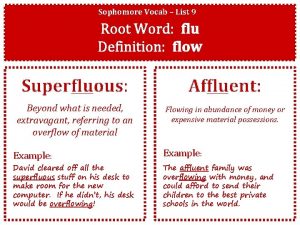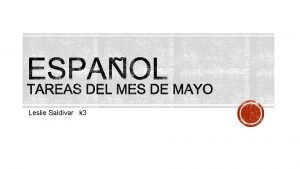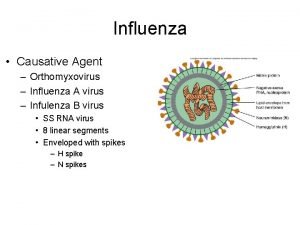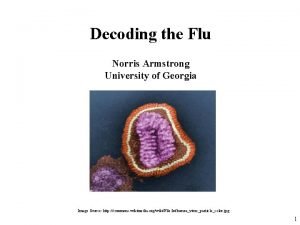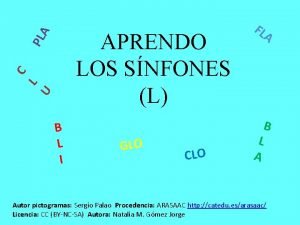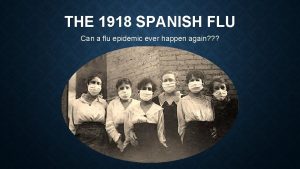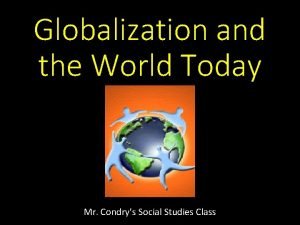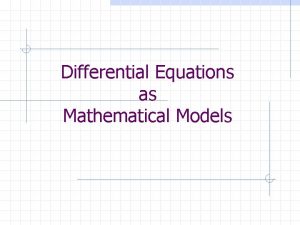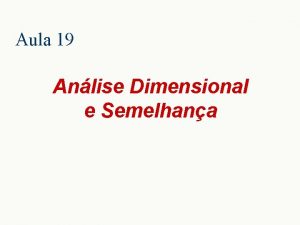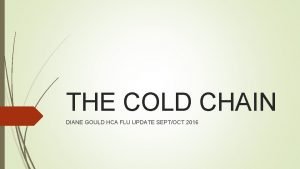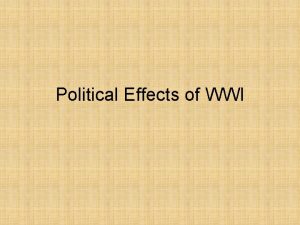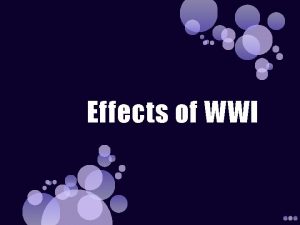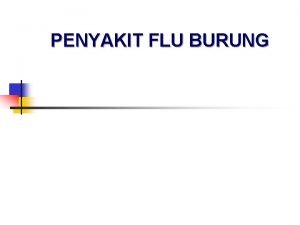Effects of WWI Chapter 19 Section 4 Flu















- Slides: 15

Effects of WWI Chapter 19 Section 4

Flu Epidemic Grips the Nation In September 1918, an unusually deadly form of the influenza strikes Research in recent years shows that the 1918 influenza virus was originally a bird flu that mutated to spread to humans Many historians now believe that the virus originated in the United States, then traveled around the world. it spread like a quickly and killed millions worldwide The great influenza pandemic, coming on the heels of the Great War, gave a sense of doom and dread to people around the globe.

Women and African Americans Confront New Realities The end of wartime economic opportunities for both groups A postwar recession, or economic slowdown, created a competitive job market Women African American workers vied with returning soldiers for jobs During the hot summer of 1919, race riots erupted The worst, in Chicago triggered by the drowning of a young black man by whites continued for 13 days 1921, Tulsa, Oklahoma when armed African American men—many of them returning veterans—tried to protect a young black man from lynching sparking race riots at least 10 whites and 26 African Americans were dead In one African American neighborhood, white rioters burned 35 city blocks to the ground.

Inflation Leads to Labor Unrest During the war, inflation, or rising prices, had been held in check. After the war Americans rushed to buy consumer goods The scarcity of goods and high demand, caused inflation During the war, the price of corn, wheat, cotton, cattle, and other agricultural goods had risen After the war prices fell sharply making it difficult for farmers to pay their mortgages or buy what they needed for the next season Industrial workers were affected by inflation their wages did not buy as much In 1919, more than 4 million workers, or 20 percent of the workforce, went on strike Demanding rewards for their wartime patriotism workers struck for higher wages and shorter workdays In Boston the police force struck

Fear of Communism Starts the Red Scare The reaction against labor was spurred by fear of radicals and communists The transition of the Soviet Union to communism, nurtured fears Communist called for an international workers’ Vladimir Lenin encouraged revolutions outside of his country In Central and Eastern Europe, a series of communist revolts made it seem like the worldwide revolution was starting This revolutionary activity and strikes across the US prompted the first American Red Scare widespread fear of suspected communists and radicals thought to be plotting revolution within the US Revolutionary activity inside the US gave substance to the scare bombs mailed to industrialists and government officials bombs exploded in cities across America.

Palmer Raids As the leading law-enforcement official, Palmer took action the Palmer Raids, police arrested thousands of people some who were radicals some who were simply immigrants from southern or Eastern Europe Most were never charged or tried for a crime The government deported hundreds of radicals. To many, these actions seemed to attack valued civil liberties American Civil Liberties Union (ACLU) formed to protect these liberties The ACLU became involved in important court cases America’s most controversial court cases the trial of Nicola Sacco and Bartolomeo Vanzetti.

Sacco and Vanzetti Italian immigrants and known anarchists. They were charged with shooting and killing two men during a holdup at a shoe factory in a town near Boston. Eyewitnesses of the event said the robbers “looked Italian. ” Sacco and Vanzetti were arrested and charged with the crime. Sacco and Vanzetti Are Executed Even though the ACLU provided defense counsel, the two men were found guilty despite the fact that there was little hard evidence against them Some prominent legal scholars, intellectuals, and liberal politicians charged that the convictions were based more on Sacco and Vanzetti’s ethnicity and political beliefs August 23, 1927, the two men were put to death in the electric chair At its worst, hysteria accompanied by violence characterized the Red Scare. Mobs attacked suspected radicals abused immigrants committed crimes in the name of justice. The great fear ended as Americans saw that democracy and capitalism were more powerful in the United States than Lenin’s call for worldwide revolution. By the summer of 1920, the Red Scare hysteria had run its course.

Americans Embrace Normalcy Presidential election of 1920 Republican candidate Warren G. Harding of Ohio served as a final rejection of Wilson’s hope for the League of Nations Harding knew that national elections seldom turned on a single issue Harding campaigned for a rejection of Wilsonian idealism He was tired of progressive reforms and foreign crusades. Harding called for a return to “normalcy” he meant the “normality” of what he believed had been a simpler time before Wilson took office in 1913. Harding won in a landslide Republicans won control of Congress Americans had decisively rejected Wilson’s ideas.

A Quiet American Giant United States did not totally withdraw from world affairs by 1920, the United States was an economic giant the richest, most industrialized country in the world before the war, America led all other nations in industrial output British and French demands for American goods created an immense trade imbalance Europeans had to borrow money from American bankers and obtain lines of credit with American business firms to pay for the goods America’s economic standing in the world was fundamentally changed The US was now the largest creditor nation in the world that other countries owed the US more money than the US owed them. WWI shifted the economic center of the world from London to New York City The US embraced its new role as a quiet giant.

The World Adjusts to a New Order World War I had caused changes around the globe German and Russian monarchies toppled New forms of government were created The Austro-Hungarian and Ottoman empires no longer existed Britain and France emerged from the war victorious economically and politically weakened The US came out of the war strong, confident, and prosperous. An old order five hundred years in the making had collapsed in just a few The United States was unsure of the requirements of its new status.

• influenza Define these terms/people • inflation • Red Scare • Palmer Raids • Nicola Sacco and Bartolomeo Vanzetti • Warren G. Harding

The Great War & the Decadent Roaring Twenties in America https: //www. youtube. com/watch? v=f. F 2 Mq. Yj. Vg 50&nohtml 5=False



 Chapter 12 reconstruction
Chapter 12 reconstruction Flu root word definition
Flu root word definition Tres personas gramaticales
Tres personas gramaticales Oraciones con fla fle fli flo flu
Oraciones con fla fle fli flo flu Infulenza b
Infulenza b Flu definition
Flu definition Decoding the flu case study answers
Decoding the flu case study answers Stomach flu vs influenza
Stomach flu vs influenza Palabras con pla ple pli plo plu
Palabras con pla ple pli plo plu Spanish flu
Spanish flu Homophone for jeans
Homophone for jeans The european economy
The european economy Suppose a student carrying a flu virus
Suppose a student carrying a flu virus Spanish flu
Spanish flu Mec flu
Mec flu Diane gould
Diane gould

